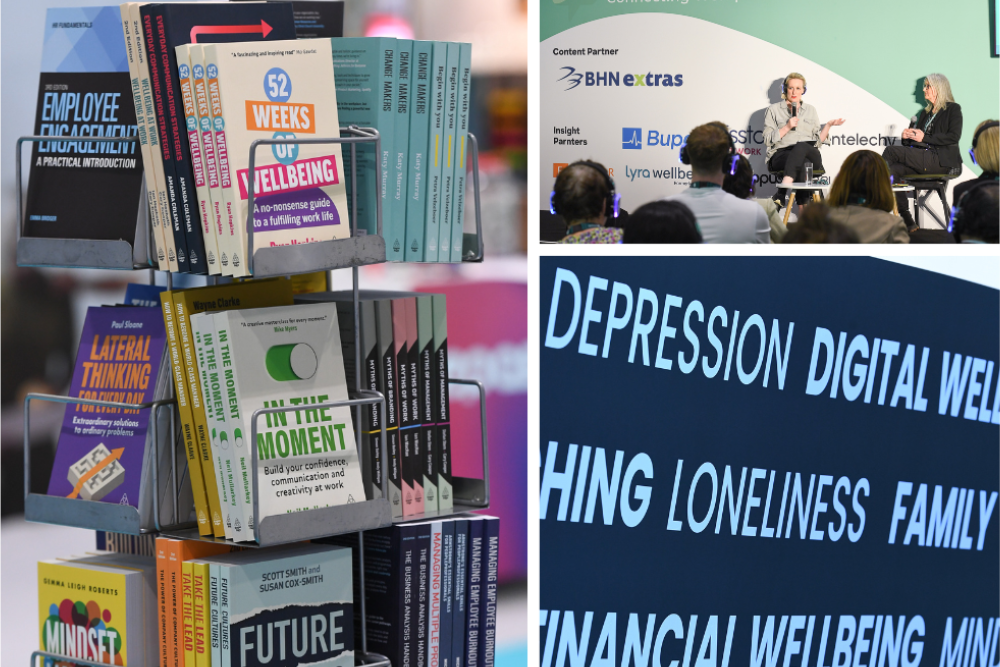It’s a simple statement, but our lives have changed. It seems we are busier than ever, and this has its impact on our nutrition and health.
The availability switch has been permanently set to “on,” with most of us reachable via several electronic devices at any time of the day or night (not to mention our online personas being tapped around the clock). I’ve heard from numerous patients reporting an ever-present sort of restlessness. Going on holiday may assure partial getaway, but we can only travel so far when available via email or cell phone.
This isn’t a rage against our modern lifestyle—there are many variables at play and newer technologies also help boost positive health initiatives—but this ubiquitous assumed accessibility does appear to have its health consequences. How we eat, how we live, and how we feel get influenced by a productivity-first dominant culture, which assumes that allocating resources for health is somehow not productive.
A few months back I presented a talk on “nutrition and mental and cognitive health” to a group of execs at a company whose name we’d all recognize. After the talk, a woman from the audience approached me to share of her own experience: “I want so badly to eat a nutritious diet, but I’m just so busy. I don’t know how to fit nutrition into my schedule, and we don’t have much access to healthy foods here. I often go to the vending machine, and then I crash by 2PM.” This got me thinking. How is this always-be-busy standard impacting our diets, and furthermore physical and mental wellness? Moreover, how can we still prioritize nutrition within the parameters of these pervading norms?
Emerging studies bridging the gap between nutrition and mental health have resolutely established that learning and memory abilities as well as mood can be influenced by diet.5 Moreover, given that depression and other mental health conditions account for majority of employee productivity losses, it stands to reason that by supporting nutrition we can also support healthy productivity. It has been shown that employees with an unhealthy diet (e.g. fewer fruits and vegetables, more heavily processed and refined foods, and larger amounts of unhealthy fats – a topic for another paper) are 66 percent more likely to report a loss in productivity.1
Poor diet is furthermore consistently on the short list of risk factors for numerous chronic diseases.2,3 The CDC recognizes the following systemic strategies as being key to supporting salubrious behaviors and lowering chronic disease risk: change environmental approaches, focus on prevention, provide community resources, and develop a public health campaign for health and disease prevention.7 Addressing diet and nutrition is foundational to this approach.
Clinically, the bigger issue does not appear to be a lack of interest in healthy nutrition on the part of the consumer. Most individuals with whom I meet are hungry for more options, but at a loss for where to start and/or how to integrate healthy nutrition into their already busy lives.
Here following is a discussion of some strategies anyone can access to prioritize nutrition, thusly supporting mental and physical fitness and preventing chronic disease.
Assess Access
First evaluate what resources are available. Consider the following:
– Meal delivery services in different price brackets, offering either premade meals or kits that help you prepare meals at home, in which you can specify dietary needs or foods to avoid
– Purchase and/or prepare healthy premade snacks in advance, keeping them at your desk, in your office fridge, or in your away bag (e.g. buy five apples at a time, carry peanut butter or almond butter packets, make a batch of hardboiled eggs once per week, or keep precut veggies and hummus on hand)
– Carry a water bottle or keep one on your desk to help support regular hydration
– Investigate what is already available: some companies provide access to healthy meals and nutrition services, reimbursements for gym memberships, or other health-supportive resources
– Help to create or support a community wellness culture by pooling your resources, planning healthy lunch potlucks or taking turns bringing in nutritious snacks
Assess Biology
Reaching for coffee and a donut at 3:00PM is not merely an act of boredom. The mid-day lull that many experience is also a product of biology: this is the point in the day when cortisol—a stimulating stress hormone that naturally shifts throughout the day and night—tends to dip, making us feel more tired and dull. Adding caffeine and sugar at this point promotes a potentially starker crash shortly thereafter, which when repeated can lead to patterns of blood sugar dysregulation that may impact sleep, energy, and mood.5 Opting instead for a high-quality protein snack and an herbal tea would promote balance over lability.
Proper nutrition supplies the body with building blocks that fuel healthy physiology. And by learning more about the body’s natural processes and associated nutritional needs, we can be more proactive versus reactive to our biological signals.
Pay attention to cravings. What you crave and when you have cravings may be related to certain nutrient deficiencies, hormone changes, or circadian rhythm imbalance. Consider visiting with a healthcare professional and/or dietitian to get targeted assessment and guidance to address your individual needs.
When in doubt, eat something. If you are occupied for hours and hours without eating or consuming caffeine instead of having a meal, your body will not get the fuel it needs to carry out its numerous biochemical processes. This pattern has its more immediate consequences and can predispose to or exacerbate existing chronic health conditions. Choosing more nutrient-dense foods is eventually preferred, but some may need to start by simply recognizing suppressed hunger signals and eating what is palatable or available.
Assess Behavior
Nutrition is not only influenced by what we eat, but also how we eat. Studies show that by eating mindfully—being present enough to experience and enjoy our food—we are better able to absorb nutrients and reap the benefits from what we eat.8,9
Dedicating time and attention to the process of eating helps to promote good nutrition, as the brain must experience taste, aroma, pleasure, and satisfaction to accurately assess a meal and catalyze digestion.4 A phytonutrient-rich salad between calls in the car, while preferable to no nutritious foods in the day, would likely be less nutritive than if you could dedicate 10 minutes to eating that same salad while seated at a table.
Some may benefit from setting a timer as a reminder to take a break to drink water, have a snack, or engage in a mindfulness exercise before or during a meal—this could be as simple as noticing your breathing while you eat, focusing on the tastes and smells of your food, or setting down the fork between bites.
Many lose track of thirst and hunger signals or become adapted to eating certain foods that may have harmful effects on health. Paying attention to the mind and body and how we relate to food can help us to be more actively engaged in our own health and fuel our motivation to engage in change.
Assess Incentives
Less nutritious options may be attractive because they are easier or faster to grab. This is understandable, especially given the prevailing climate being discussed. Engaging in dietary change requires some attention and effort, which will likely feel less cumbersome if we can identify the positives of making healthy nutrition a priority.
Eating nourishing foods can prevent disease and positively support sleep, energy, stress management, cognition, mood, productivity, performance, recovery, physical strength, and other foundational aspects of wellness.6
By recognizing the incentives of implementing change, we will be more likely to sustainably choose behaviors that promote vitality.
Summary
Diet is a modifiable risk factor. Some companies are steadfast in recognizing this issue, offering nutritious options in their cafeterias or providing access to other health-based programs. Still a larger paradigm shift is needed to raise health and nutrition higher on the popularly held list of priorities. By taking a more systemic approach to diet and nutrition—recognizing that by addressing health-based initiatives we actually boost productivity and prevent disease-related losses—we may better get to the root cause of the issue. Integrating wellness into a busy schedule is very doable, but it requires our involvement in the process. Health in this way is a verb.
References
1. Agarwal D, Bersin J, Lahiri G, Schwartz J, Volini E. Well-being: A Strategy and a Responsibility. Deloitte Insights. March 28, 2018.
2. Barker D. Developmental origins of chronic disease. Public Health. 2012;126(3):185-189. doi:10.1016/j.puhe.2011.11.014
3. Bauer U, Briss P, Goodman R, Bowman B. Prevention of chronic disease in the 21st century: elimination of the leading preventable causes of premature death and disability in the USA. The Lancet. 2014;384(9937):45-52. doi:10.1016/s0140-6736(14)60648-6
4. Berthoud H. Vagal and hormonal gut-brain communication: from satiation to satisfaction. Neurogastroenterology & Motility. 2008;20:64-72. doi:10.1111/j.1365-2982.2008.01104.x
5. Gomez-Pinilla F. Brain foods: the effects of nutrients on brain function. Nat Rev Neurosci. 2008;9:568-578.
6. Healthy Living Is the Best Revenge. Arch Intern Med. 2009;169(15):1355. doi:10.1001/archinternmed.2009.237
7. How We Prevent Chronic Diseases and Promote Health | CDC. Cdc.gov. https://www.cdc.gov/chronicdisease/center/nccdphp/how.htm. Published 2019. Accessed September 12, 2019.
8. Sclafani A. Gut–brain nutrient signaling: appetition vs. satiation. Appetite. 2013;71:454-458. doi:10.1016/j.appet.2012.05.024
9. Tsurugizawa T, Uematsu A, Nakamura E et al. Mechanisms of neural response to gastrointestinal nutritive stimuli: the gut-brain axis. Gastroenterology. 2009;137(1):262-273. doi:10.1053/j.gastro.2009.02.057
About the Author:
Dr. Ana Ruediger practices with Vejo+, an integrative clinic in Santa Monica, California, focused on providing individualized, nutrition-driven interventions for its patients. Dr. Ruediger earned her doctorate in naturopathic medicine (ND) and master’s in counseling psychology (MACP) degrees at Bastyr University in Seattle, Washington. In addition to her residency training in naturopathic primary care medicine, she has specialized training in integrative addiction and mind-body medicine. She completed an internship in a dual-diagnosis inpatient treatment facility for patients in addiction and mental health disorders recovery. Dr. Ruediger is dedicated to community outreach, health education, and social justice issues. She leads with the philosophy that all people can benefit from being heard, and an individualized, whole-person approach can empower patients to make changes to achieve optimal well-being.















